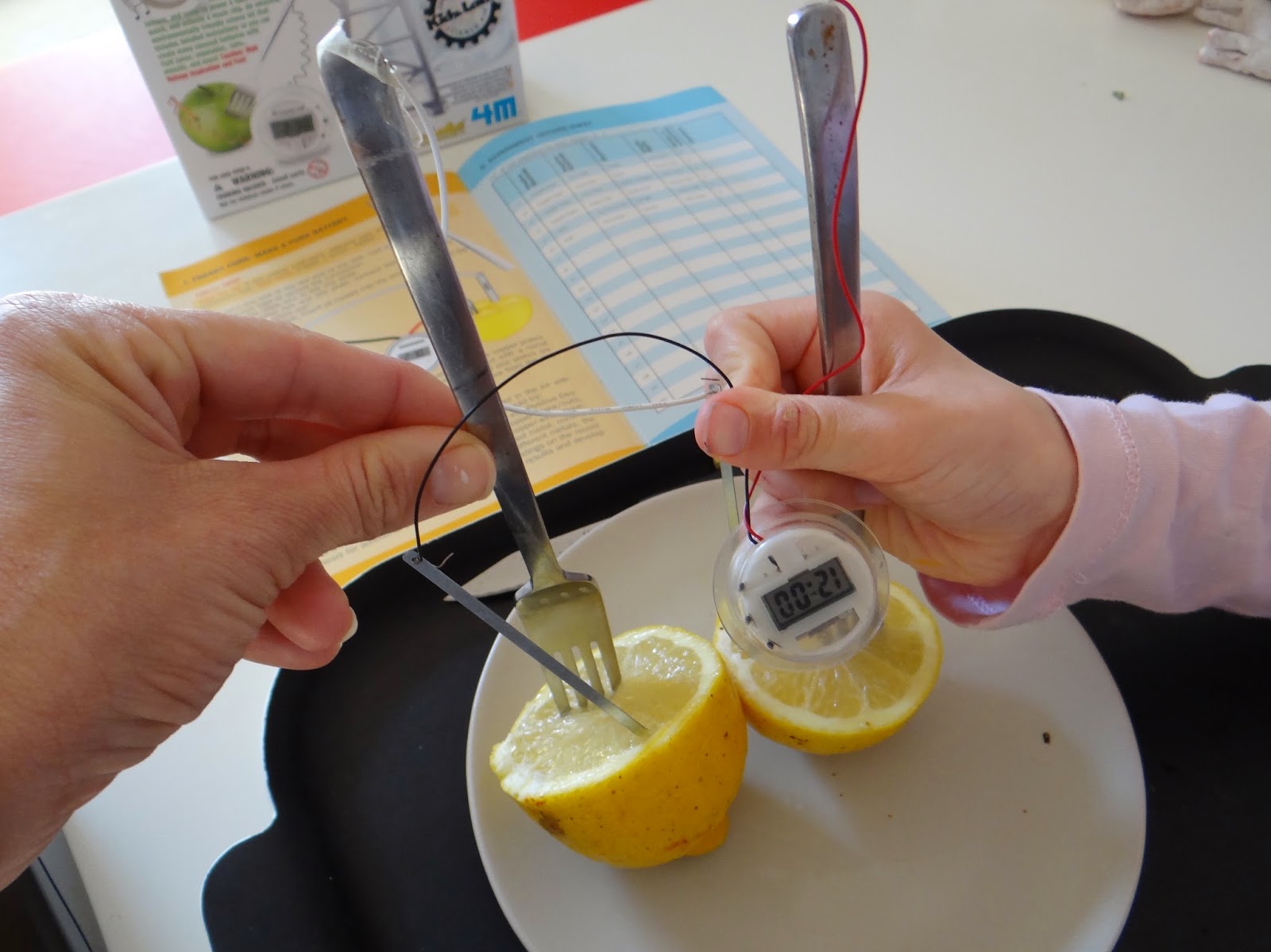Continuando con el album de ciencias hicimos estos experimentos del kit Green Science, que podéis encontrar aquí. // To follow up the Science album we did these experiments from the Green Science kit, that you can find here.
1er experimento: Un reloj activado por una patata. Necesitaremos un reloj, dos láminas de zinc, dos láminas de cobre y un cable de conexión. // The 1st experiment: a potato-powered clock. You will need a watch, two zinc plates, two copper plates and a connecting wire.
Conectamos el cable negro del reloj, negativo, a una de las placas de zinc, que es un metal más reactivo. Luego conectamos el cable rojo del reloj, positivo, a una de las placas de cobre. // We connect the black wire from the watch (negative) to one of the zinc plates, which is a reactive metal. Then we connect the red wire from the watch (positive) to a copper plate.
Conectamos un par, uniendo el otro par de láminas de zinc y cobre mediante un cable de conexión (blanco). // Assemble a connection pair, by connecting the other pair of copper and zinc plates with a connection wire (white).
Ahora que todos los componentes están conectados, insertamos las láminas de cobre y zinc en las patatas, como en la foto. Y ya tenemos un reloj activado por patatas. // Now that all the components are connected, we insert the copper and zinc plates into the potatoes, as shown in the picture, so now we have a potato powered clock.
2º Experimento: Hacemos una batería con tenedores. Necesitaremos dos láminas de zinc, un reloj y un cable de conexión. // 2nd Experiment: A Fork Battery, we will need two zinc plates, a LCD clock and a connection wire.
Conectamos el cable rojo del reloj ( positivo) al tenedor. Conectamos el cable negro (negativo) a la lámina de zinc. Conectamos otro tenedor y otra lámina de zinc con un cable de conexión para hacer un par. Insertamos todos los metales en los limones... ¡y ya funciona!// We connect the red wire (positive) to the fork. Connect the black wire (negative) to the zinc plate. We get another fork and a zinc plate, we connect them with a wire to make a connection pair. We insert all the metals into the lemon and the clock is activated!
¿Por qué funciona?, El tenedor funciona como el electrodo positivo de la batería, al igual que las láminas de cobre en el experimento anterior. El recubrimiento metálico de los tenedores es menos reactivo que el zinc. Al introducir las láminas zinc y los tenedores en el limón, se produce la reacción, los electrones se desplazan de las láminas de zinc al tenedor formando una corriente. // Why does it work? The fork acts like the positive electrode of the battery, like the copper plate in the previous experiment. The plated of the fork is less reactive than zinc. When both the fork and zinc plates are inserted in the lemon, a reaction takes place. Electrons move from the zinc plates to the fork forming a current.
¡Feliz Enseñanza Montessori! // Happy Montessori Schooling!









No hay comentarios:
Publicar un comentario